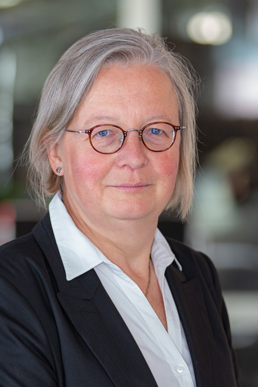Now the Swabian mobility tinkerers at PARAVAN GmbH have done it and Klaus can finally go on tour with his new Mercedes S-Class. High-tech doesn't always have its advantages, so the nut to crack at the PARAVAN Mobility Park was a pretty tough one; the curse and blessing of technological progress.
Even if it was a long way to get there - now it's done! It was difficult for the PARAVAN technicians to customize the vehicle's secondary functions. Although the high-tech saloon has many useful and helpful functions, it was not so easy to integrate a blinker or the automatic gearshift into the PARAVAN Touch or the voice control system used to operate the vehicle's secondary functions. Autonomous driving functions today have a different level of safety and are unfortunately not always included. The new Mercedes S-Class is the first vehicle with Level 3 standard autonomous driving functions.
But "can't do" doesn't exist at PARAVAN and so good old mechanics had to be used to solve the problem. Some of the secondary functions (gearshift, indicators and lights) are now controlled by small precision motors via a linkage and no longer by an electronic pulse as if by magic. This impressed Klaus and seemed familiar to him, as he says: "Only what I don't try won't work, that's my motto in life.
The Austrian entrepreneur and former music producer travels a lot and relies on self-determined mobility. "Only through mobility have I been able to achieve what I have achieved in my life," says the 62-year-old, who has covered a good two million kilometers accident-free since the age of 18. In the beginning, he drove a slightly modified car with automatic transmission and power steering. For ten years and 270,000 kilometers, he has relied on a drive-by-wire solution with a joystick. "Sometimes I drive over 1,000 kilometers a day," he says.
Like its predecessor, he controls his new Mercedes S 400d exclusively with his right hand using a four-way joystick. This time, the Space Drive driving and steering system is also on board. A custom-made armrest, adjusted to the millimetre, gives him the necessary support and safety. "When everything fitted perfectly, we immediately hit the road," reports Klaus. A few bends and he had his new vehicle "under control". And after two or three familiarization rides; "now I feel safe".
Integrating the vehicle's secondary functions was a major challenge for the PARAVAN technicians and a test of patience for the customer. But now it's done. He can now operate all the relevant functions of his vehicle - right down to the automatic sun visor - by voice control. "It's now technically more sophisticated," says the frequent driver, "especially when it comes to the secondary functions and voice control. This also applies to his new driving and steering system: "The first impression was perfect, especially when cornering." He stows his wheelchair in the trunk with the help of a loading boy.
But despite all the enthusiasm, there is still one fly in the ointment: "Despite all the technical progress, the people who are dependent on such vehicle conversions must not fall by the wayside," he warns. Mobility concepts should be designed to be inclusive from the outset. People with disabilities are dependent on individual vehicle conversions in order to be able to participate in life in a self-determined way. He has had his car for a good two months and has already covered almost 10,000 kilometers with it.
You can find the movie about the project here!








